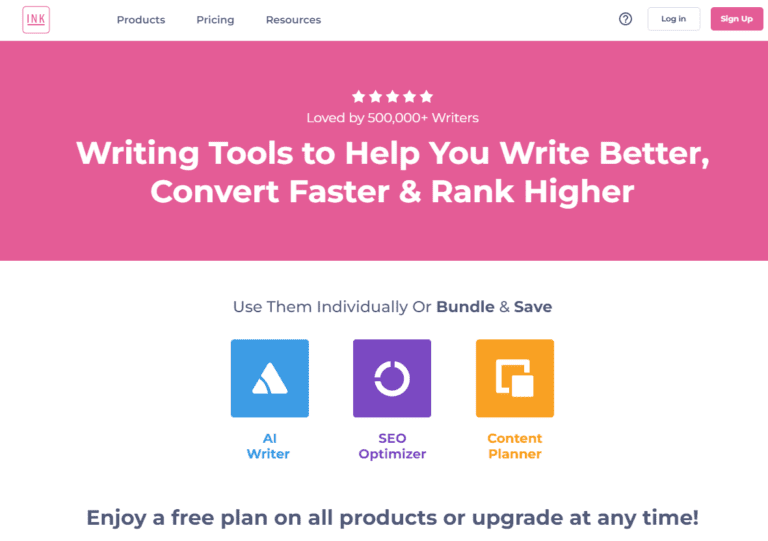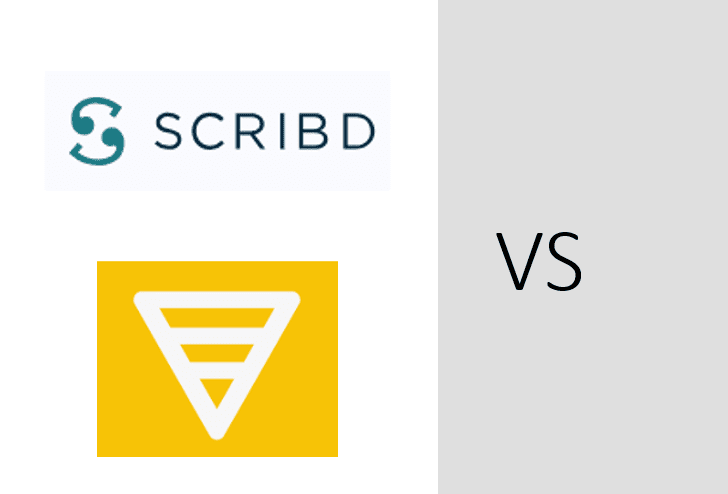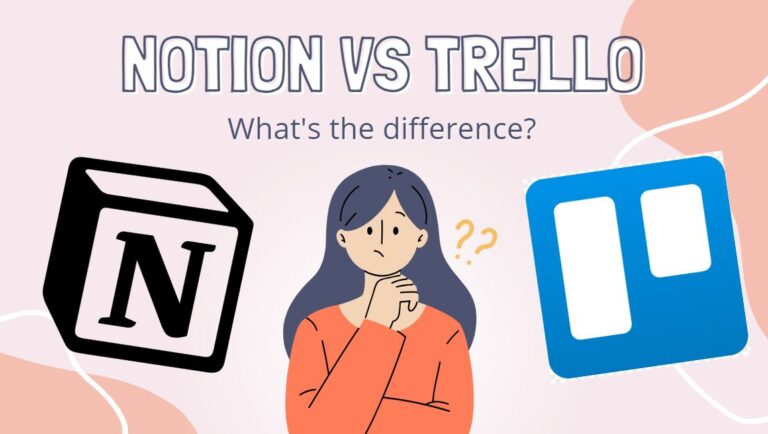Writing On Medium In 2023 – ‘How To’ Guide For Beginners

Writing On Medium in 2023
Medium is an online platform that has revolutionized the way writers share their work with the world. It still continues to remain popular (yes, even in 2023). Medium is the 66th ranked website (of the 180 million+ known websites) in the world according to Ahrefs. It brings an annual traffic of 9.1M traffic every month.
Unlike traditional blogging platforms, Medium offers a unique set of features designed to help writers reach a wider audience, build a following, and even earn a few extra bucks for their work. If you’re new to the Medium ecosystem or looking to improve your writing and publishing skills, this guide is for you.

In this beginner’s guide, we’ll take you through the process of creating an account on Medium, customizing your profile, and getting started with writing and publishing articles. We’ll also share tips and tricks for building an audience, monetizing your work, and using Medium’s analytics to track your success.
Whether you’re an experienced writer or just getting started, this guide will provide you with the knowledge and skills you need to effectively use Medium as a platform for your writing.
Why Choose Medium as Your Writing Platform?
A. High Domain Authority and SEO Benefits (vs Own website)
One of the biggest advantages of publishing on Medium is its high domain authority, which means that content published on the platform has a better chance of ranking well on search engines like Google. This is due in part to the website’s optimized structure, which is designed to make it easy for search engines to crawl and index content.
As a result, writers who publish on Medium have a better chance of being discovered by new readers than they might on a personal blog or website.
B. In-Built Paying Audience for Medium Writers + Medium partner program
Medium has millions of users, many of whom are willing to pay for access to exclusive content through the platform’s Partner Program. By joining the program, writers can earn money for their work and receive a share of the revenue generated by the platform’s paying members.
This incentivizes writers to create high-quality content that is valuable to readers and provides a way for writers to monetize their work without relying on ads or sponsorships. Medium pays almost 90% of the money earned from subscriptions.
C. User-Friendly Tools and Features for Creating and Publishing Content
Medium offers a range of user-friendly tools and features that make it easy for writers to create and publish content. The platform’s editor is simple and intuitive, with features like formatting, spell-check, and a built-in SEO analyzer that helps writers optimize their articles for search engines.
Additionally, Medium offers a range of publishing options, including the ability to add images, videos, and other multimedia to articles.
D. Curation System that Rewards Quality Content
Medium’s curation system rewards high-quality content by showcasing it to a wider audience. Articles that are selected for distribution by Medium’s editors have the potential to reach a larger audience and attract more readers.
This system incentivizes writers to produce high-quality work and provides a way for readers to discover new and interesting content. The medium feed actively promotes these curated articles.
E. Opportunity to Earn Money through Medium’s Partner Program
In addition to providing a platform for writers to showcase their work, Medium also offers the opportunity to earn money through its Partner Program. By joining the program, writers can earn money based on the engagement their content generates from Medium’s paying members.
This provides an alternative revenue stream for writers and encourages them to create content that is valuable and engaging to readers.
Before You Start Writing on Medium

A. Creating an Account and Profile
To get you started writing on Medium, the first step is to create an account. This can be done by visiting the Medium website and clicking the “Sign Up” button. Once you have created an account, you can create a profile that showcases your writing style and interests.
Your profile should include a bio, photo, and links to your social media accounts and personal website, if applicable. You can also include a list of publications you have written for or contributed to, as well as any relevant awards or accolades.
B. Customizing Your Profile to Showcase Your Writing Style
One of the benefits of publishing on Medium is the ability to customize your profile to showcase your writing style and interests. This can be done by selecting a custom profile photo, header image, and background color scheme.
Additionally, you can customize your profile’s “Featured” section to highlight your best and most popular articles. This allows readers to get a sense of your writing style and interests, and can help attract a dedicated following of readers.
C. Understanding the Medium Interface
Medium has a user-friendly interface that makes it easy for writers to create and publish content. The main dashboard displays a feed of articles from writers you follow, as well as curated articles from Medium’s editorial team. To create a new article, click the “Write a Story” button in the top right-hand corner of the screen.
This will take you to the Medium editor, where you can write and format your article using a range of built-in tools and features. Once you have finished writing your article, you can preview it and then publish it to Medium.
Additionally, Medium has a range of other features and tools that writers can use to engage with readers and promote their work. These include the ability to add tags to your articles to make them more discoverable, the ability to highlight and annotate text within articles, and the ability to interact with readers through comments and responses.
Writing On Medium
Finding Your Writing Niche on Medium

With millions of articles published on Medium every month, it can be overwhelming to try and stand out. One effective way to increase your visibility on the platform is to find your writing niche. This means identifying a specific topic or area of expertise that you are passionate about and focusing your writing on it.
When you write within a specific niche, you become known as an authority on that topic, and your articles are more likely to be recommended to readers who are interested in the same subject.
To find your niche on Medium, start by brainstorming topics that you enjoy writing about or that you have expertise in. Then, research existing publications and writers on Medium who are writing within that niche.
Look at what topics they are covering and what style of writing they are using. Are they writing long-form articles or shorter pieces? Are they using a more personal voice to write stories or a more formal one? Use this research to inform your own writing and to identify gaps in the content that you can fill with your own unique perspective.
Crafting Engaging Headlines and Subheadings
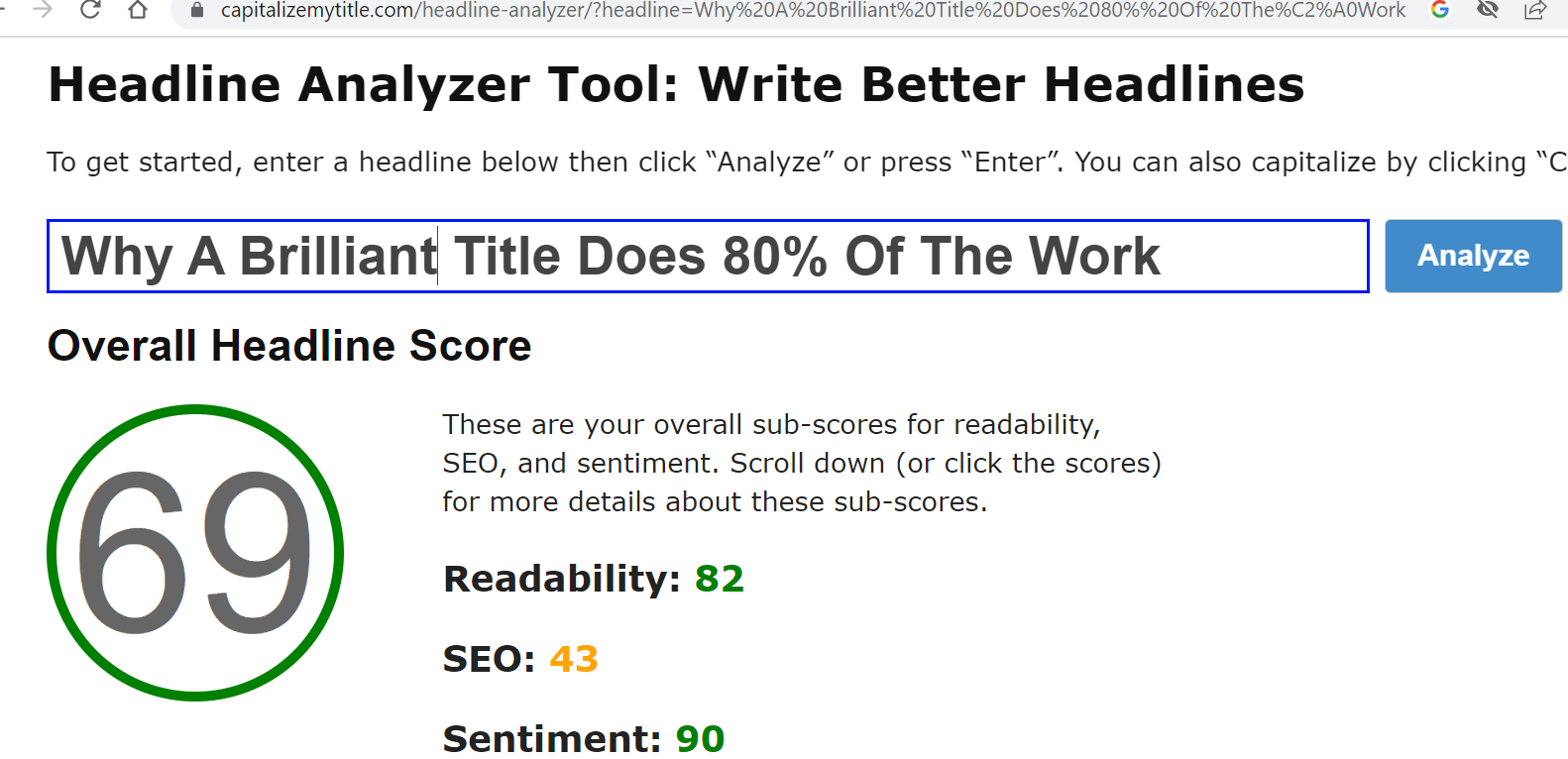
The headline and subheadings of your article are crucial elements in attracting and retaining readers on Medium. A great headline should be attention-grabbing, succinct, and accurately reflect the content of the article. It should be designed to pique the interest of potential readers and entice them to click through to read the full article.
Similarly, subheadings help to break up the content of your article and make it easier to read. They should be informative, engaging, and relevant to the content of the article. This not only helps readers to navigate your article more easily, but it also makes it more visually appealing and engaging.
To craft a great headline, start by brainstorming a few different options that accurately reflect the content of your article. Try to keep your headline under 70 characters so that it doesn’t get truncated in Medium’s previews or on social media.
Once you have a few options, test them out on others to see which one is most attention-grabbing. You can also use tools like CoSchedule’s Headline Analyzer or EMV Headline Analyzer to help you optimize your headline for maximum impact.
When it comes to subheadings, aim to include at least two or three in your article. These should break up the content into easily digestible sections and help readers to navigate the article more easily. Consider using questions or statements as your subheadings to pique readers’ interest and encourage them to keep reading.
The Importance of Storytelling in Medium Articles
One of the defining characteristics of Medium is the emphasis on storytelling. While there are a variety of different types of articles that can be published on the platform, those that incorporate narrative elements and personal anecdotes tend to perform particularly well.
Incorporating storytelling into your Medium articles can help to make them more engaging and relatable to readers. By sharing personal experiences and insights, you can help readers to connect with your article on a deeper level and make it more memorable.
To see how medium effectively incorporate storytelling into your Medium articles, start by identifying a personal experience or anecdote that relates to your topic. Then, use that experience as a jumping-off point to discuss the broader themes or ideas that you want to explore in your article.
When telling your story, aim to be honest, vulnerable, and authentic. This will help readers to connect with you on a personal level and make your article more engaging. Remember, the goal of storytelling on Medium is not just to entertain, but also to inform and inspire readers.
Structuring Your Article on Medium
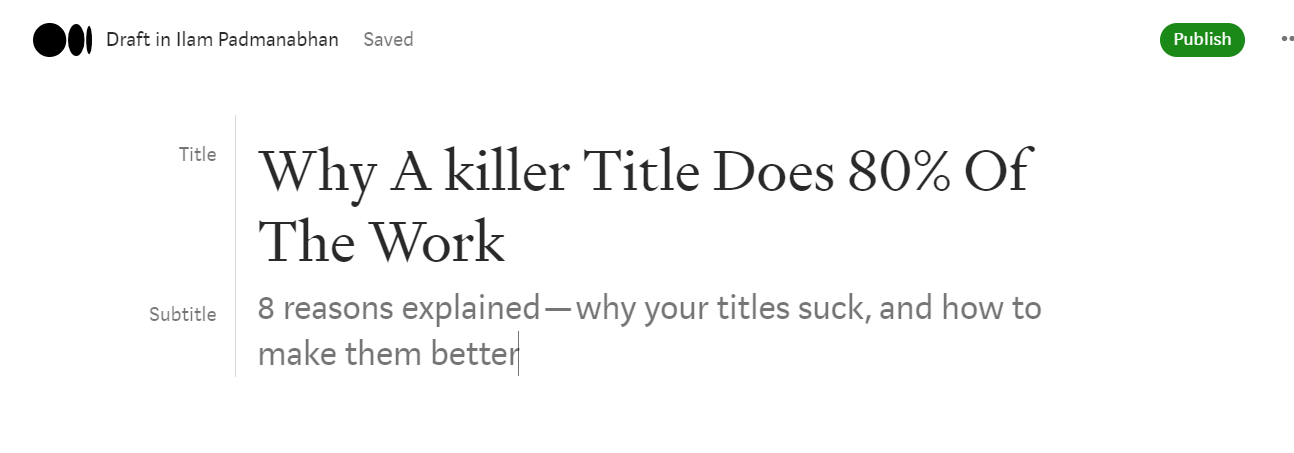
When it comes to writing on Medium, the structure of your article can be just as important as the content itself. A well-structured article is easier to read, more engaging, and more likely to be shared with others. In this section, we’ll go over some tips for structuring your Medium article to make it as effective as possible.
Use a Clear and Concise Introduction
The introduction of your article is where you hook the reader and draw them in. It’s important to make a strong first impression and clearly state the topic of your article. You can do this by using a clear and concise introduction that sets the stage for what’s to come. Some effective ways to do this include:
- Asking a question that’s relevant to your topic
- Sharing an anecdote or personal story that illustrates the point you’re trying to make
- Providing a shocking statistic or surprising fact that grabs the reader’s attention
Break Your Article Up into Sections
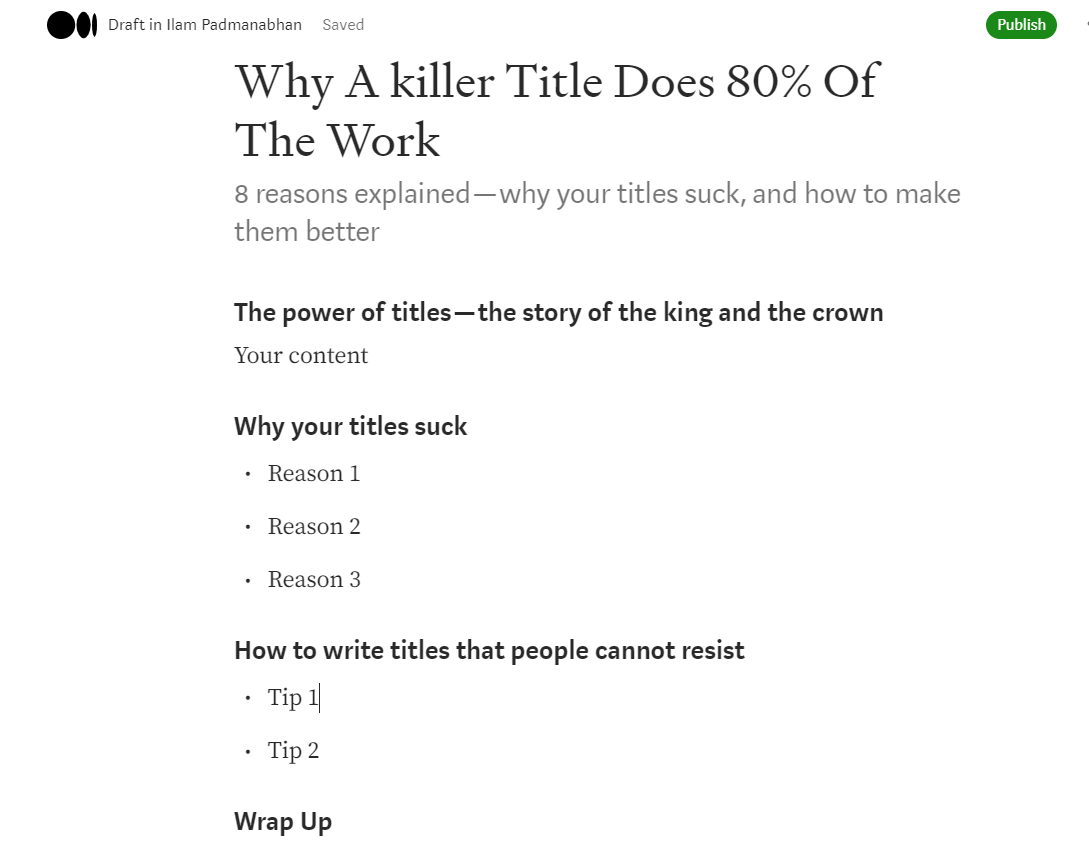
Breaking your article up into sections or subheadings is a great way to make it easier to read and navigate. This also allows readers to easily scan the article for the information they are most interested in. Some effective ways to structure your sections or subheadings include:
- Organizing your article around a central theme or topic
- Using bullet points, numbered lists, or other formatting elements to highlight key points
- Using subheadings that clearly state what each section is about
Use Formatting Elements to Highlight Key Points
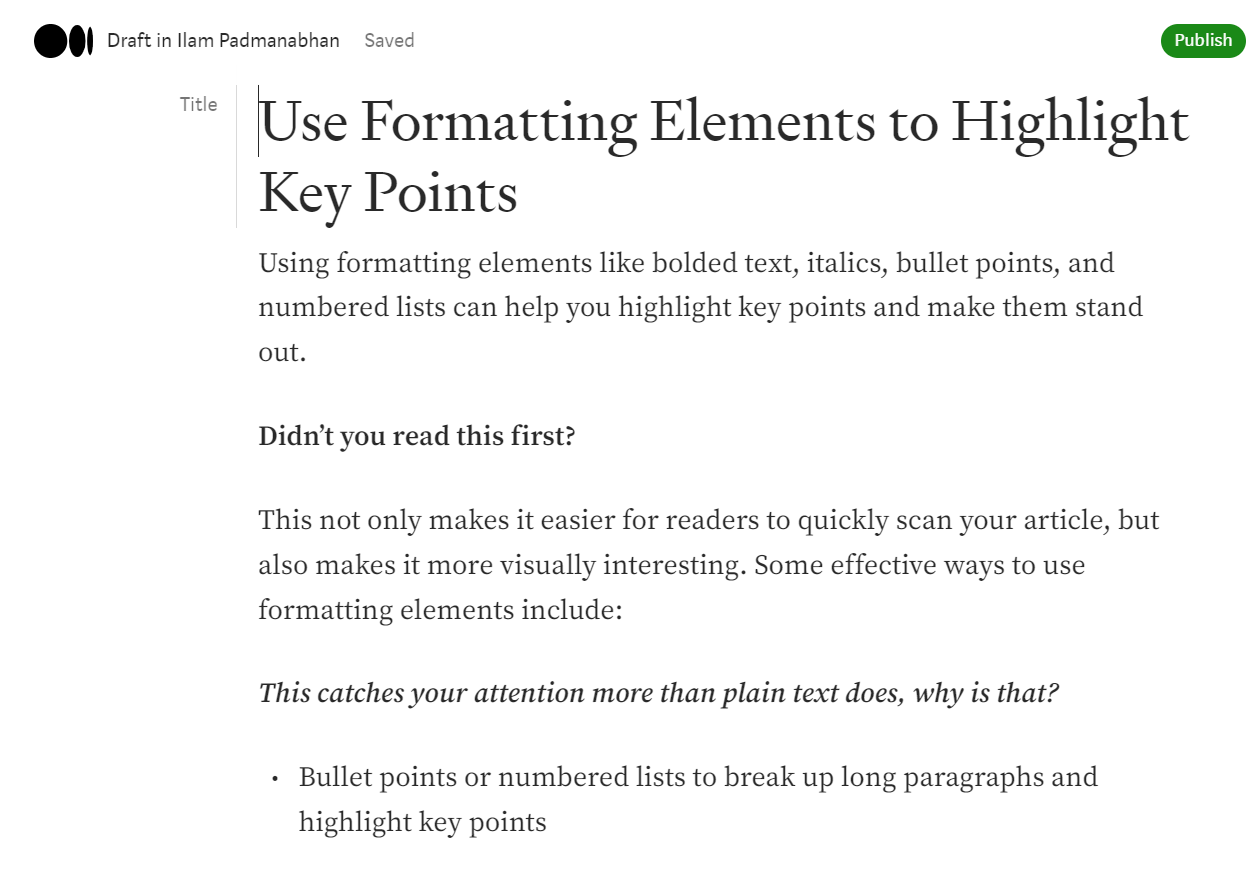
Using formatting elements like bolded text, italics, bullet points, and numbered lists can help you highlight key points and make them stand out. This not only makes it easier for readers to quickly scan your article, but also makes it more visually interesting. Some effective ways to use formatting elements include:
- Bold text to emphasize important words or phrases
- Italics to indicate quotes or other types of content
- Bullet points or numbered lists to break up long paragraphs and highlight key points
Include Images or Other Multimedia Elements
Including images, videos, or other multimedia elements is a great way to break up the text and provide visual interest. This not only makes your article more engaging, but also helps to illustrate your points and make them more memorable. Some effective ways to use images or other multimedia elements include:
- Using images to illustrate key points or concepts
- Embedding videos or audio clips to provide additional context or information
- Creating infographics or other visual aids to help illustrate complex topics
Use a Clear and Concise Conclusion
The conclusion of your article is where you summarize the main points and provide a call to action or takeaway for the reader. It’s important to use a clear and concise conclusion that leaves the reader with a strong impression of your article. Some effective ways to do this include:
- Summarizing the main points of your article
- Providing a call to action or next steps for the reader to take
- Ending with a memorable quote or personal anecdote that ties everything together
By structuring your article in this way, you make it easier for readers to engage with your content and increase the chances that they will share it with others. So take some time to think about how you can structure your next Medium article to make it as effective as possible.
Most readers skim through your article and come to last section before you expect them to. Write share conclusions to help them understand the value (& take away) from the post.
The Publishing Process on Medium
Medium has a simple publishing process that makes it easy for writers to get their work out there. Here are the key steps to publishing on Medium:
Uploading articles to Medium
Once you’ve written your article, you can easily upload it to Medium using the platform’s built-in editor. Simply click on the “New Story” button and start typing or copy-pasting your article.
Medium’s editor is straightforward and easy to use, with formatting options such as bold, italic, and underlining, as well as the ability to add links and images.One important thing to keep in mind when uploading your article is to make sure you have selected the right publication.
You can publish your article on your own profile, or submit it to a publication that is relevant to your niche. If you’re submitting to a publication, make sure to read their submission guidelines carefully, as each publication has its own requirements and standards.
Adding multimedia to your articles

Adding multimedia, such as images, videos, and GIFs, to your Medium article can help enhance its visual appeal and make it more engaging for readers.
To add multimedia to your article, simply click on the “Add image” or “Add video” button in the editor, and select the file you want to upload. You can also add multimedia by copy-pasting a link to a YouTube video or a tweet.
When adding multimedia to your article, make sure it’s relevant to your content and enhances the reader’s understanding of the topic. Avoid adding too many images or videos that might distract readers from the main message of your article.
Understanding Medium’s curation process
Medium has a curation process that selects articles to feature on the platform’s homepage, in email digests, and in topic-based collections. Curation can significantly increase the visibility of your article and help you reach a wider audience.
To be considered for curation, your article needs to meet the Medium algorithm’s quality standards, which include originality, clarity, and relevance to the reader. Medium’s algorithms also take into account factors such as the engagement (likes, claps, and comments) your article receives, and the quality of your previous articles.
If your article is selected for curation, you will receive an email notification from Medium. However, even if your article is not selected for curation, you can still promote it on social media and other platforms to reach a wider audience.
Building an Audience on Medium
Once you’ve started publishing on Medium, it’s important to focus on building an audience for your work. Here are some tips for growing your following on the platform:
Best practices for promoting your articles on Medium
One of the best ways to promote your articles on Medium is by leveraging the platform’s built-in audience. Medium’s readers also has a system of “recommendations” or “claps” which can boost your article’s visibility and make it more likely to be seen by other readers. To encourage recommendations and claps, make sure your articles are high-quality and engaging, and consider using eye-catching images and headlines.
In addition to this, consider joining and contributing to relevant Medium publications that align with your interests and expertise. Many publications have large followings, and contributing to them can help you gain exposure to a wider audience.
Engaging with other writers and readers on the platform
Engaging with other writers and readers on Medium is a great way to build relationships and increase your visibility on the platform. You can do this by leaving thoughtful comments on other writers’ articles, participating in discussions in relevant Medium groups, and responding to comments on your own articles.
Networking with other writers on Medium can also lead to collaboration opportunities, such as co-writing articles or contributing to each other’s publications.
Leveraging social media to increase your Medium following
Another way to increase your your Medium readers and following is by leveraging social media. Share your Medium articles on your social media profiles, and consider joining Medium-related Facebook groups or Twitter chats to connect with other writers and readers. You can also use social media to promote any Medium publications you contribute to, or to announce any new articles you’ve published on the platform.
Monetizing Your Writing on Medium
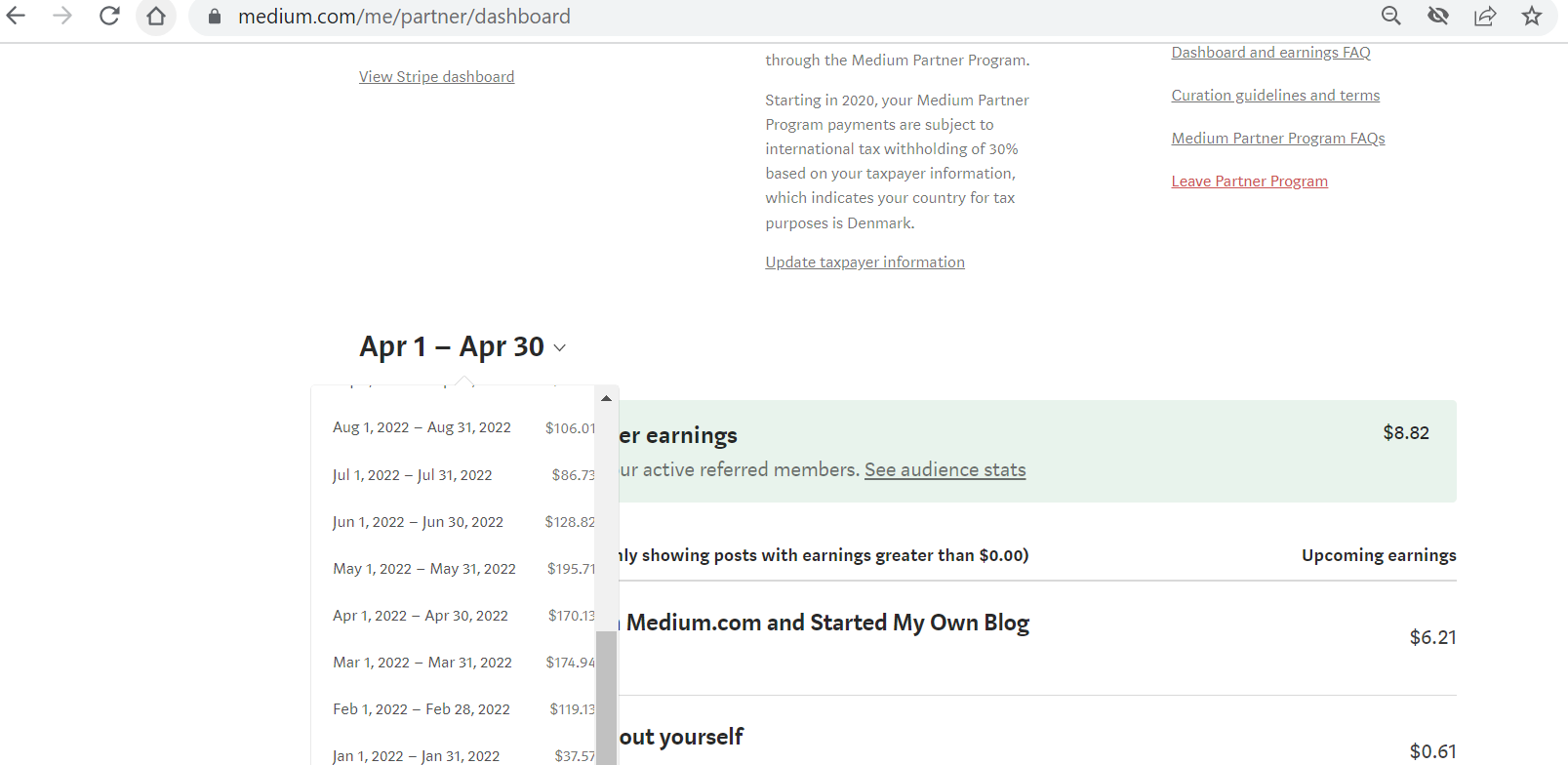
If you’re interested in making money from your writing on Medium, there are several ways to do so. Here’s what you need to know about monetizing your Medium content:
Understanding Medium’s Partner Program
Medium’s Partner Program allows writers to earn money based on the engagement their articles receive, including claps, reads, and the time readers spend on their articles. To participate in the program, you’ll need to apply and be accepted, and then you can start earning money for your work.
Tips for maximizing earnings through the Partner Program
To maximize your earnings through the Medium Partner Program, focus on creating high-quality, engaging content that resonates with your target audience. Pay attention to your article’s headlines, subheadings, and formatting to make it more appealing to readers.
Additionally, consider promoting your articles on social media and joining relevant Medium publications to increase your exposure and reach a wider audience.
Exploring alternative revenue streams on Medium
While the Medium Partner Program is a great way to earn money from your writing, there are also other revenue streams you can explore. For example, you can offer paid subscriptions to your own followers (via email newsletters) on Medium, which can give you more control over the content you publish and the revenue you earn.
Alternatively, you can monetize your Medium content by republishing it on other platforms, such as your own blog or website, or by turning your articles into ebooks or courses that you can sell.
Advanced Tips and Tricks for Medium
While the previous sections covered the basics of writing and publishing on Medium, there are also several advanced tips and tricks that can help you take your Medium game to the next level.
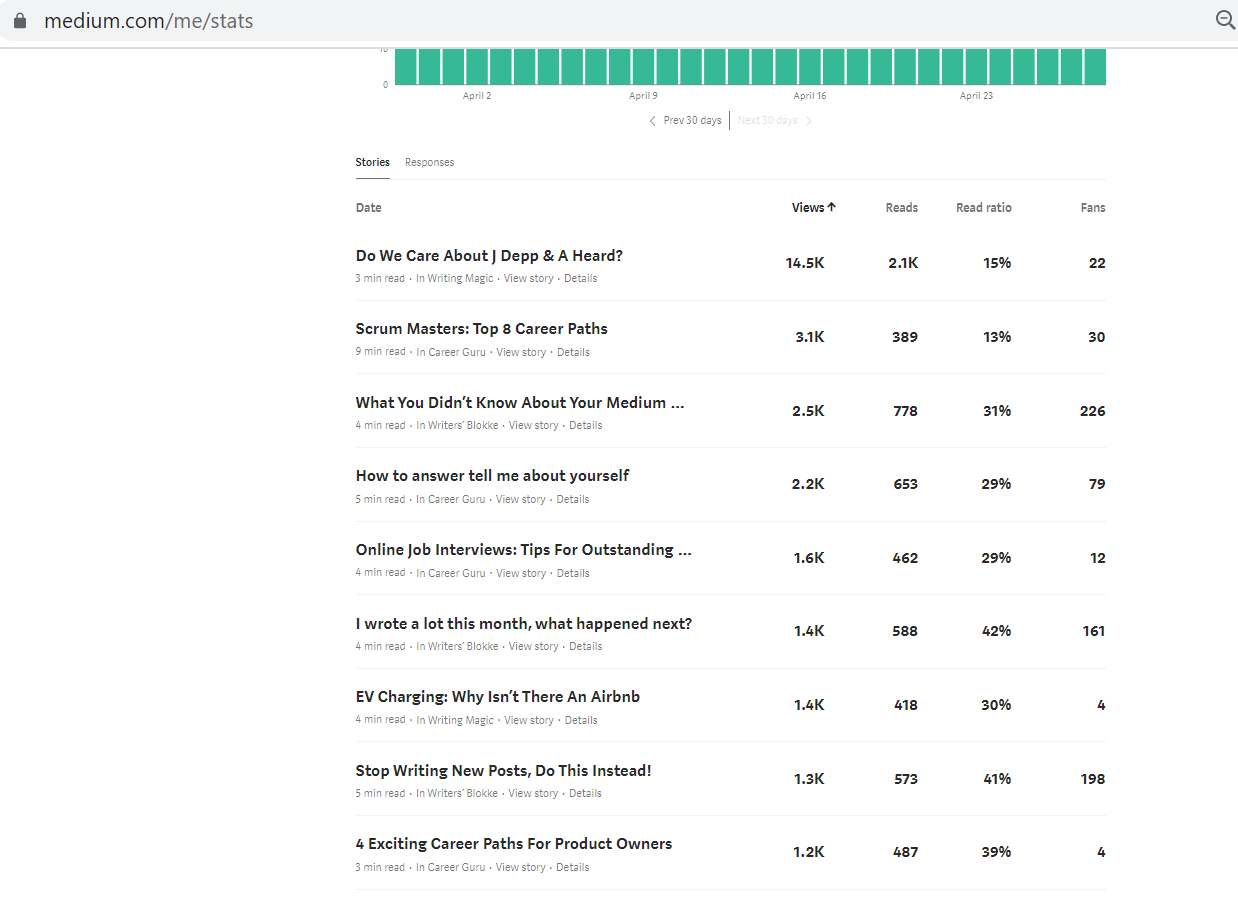
Utilizing Medium’s analytics to track article performance
One of the benefits of publishing on Medium is the platform’s built-in analytics tool, which allows you to track the performance of your articles in real-time. By monitoring metrics such as views, reads, and engagement, you can gain valuable insights into what works and what doesn’t when it comes to your content.
You can use this data to inform your content strategy, optimize your headlines and subheadings, and make other improvements to your writing.
Creating a content calendar for consistent publishing
Consistency is key when it comes to building a following on Medium. By publishing articles on a regular schedule, you can keep your readers engaged and build anticipation for your next piece. To ensure that you stay on track, consider creating a content calendar that outlines your publishing schedule and the topics you plan to cover. This will help you stay organized and focused, and will make it easier to publish new articles on a consistent basis.
Optimizing your writing for Medium’s SEO
Like any content platform, Medium relies on search engine optimization (SEO) to help readers find relevant articles. By optimizing your writing for Medium’s SEO, you can increase your visibility on the platform and attract more readers to your work. This involves incorporating keywords into your headlines, subheadings, and body text, as well as using internal and external links to build your authority and credibility.
Engaging with other writers and readers on Medium
One of the most valuable aspects of Medium is the community of writers and readers who use the platform. By engaging with other medium users through comments, responses, and social media, you can build relationships, gain feedback on your writing, and expand your network. Consider joining Medium groups and publications, attending virtual events, and participating in writing challenges to connect with like-minded individuals and improve your writing skills.
Wrap Up
Writing and publishing on Medium can be an excellent way to reach a wider audience, build your writing skills, and even earn money. By following the tips and best practices outlined in this guide, you can create engaging articles that resonate with readers, optimize your content for Medium’s platform and algorithms, and build a loyal following of fans and fellow writers.
So why not get started on your Medium journey today? Click the link below to create your Medium account and start sharing your ideas with the world.
[Insert your personal referral link here]
Remember, success on Medium takes time and effort, but with persistence and dedication, you can achieve your writing goals and build a thriving career on the platform. So don’t be afraid to experiment, try new techniques, and engage with the vibrant community of writers and readers on Medium.
Thank you for reading, and we look forward to seeing your articles on Medium!
Frequently Asked Questions
Can I use Medium in addition to other social media platforms to promote my writing?
Yes, you can use Medium in conjunction with other social media platforms to promote your writing and build your online business presence. Promoting Medium articles on LinkedIn, Facebook, Twitter is very common and helps build your online presence.
Does Medium pay writers for their stories?
Yes, Medium has a Partner Program that allows writers to earn money based on the engagement and success of their first stories published. The MPP is not operational in some countries, please check before you begin publishing articles if you intend to monetize it.
How many tags can I add to my Medium stories?
You can add up to five tags to your Medium stories to help them reach a relevant audience.
What is a Medium story?
A Medium story refers to any entire story or piece of writing that has been published on the Medium platform.
How does Medium work for writers?
Medium allows writers to create and publish valuable content for its readers. Writers can also earn money through the Medium Partner Program.
Can I make money writing on Medium?
Yes, writers can earn money through the Medium Partner Program, as well as through other alternative revenue streams on the platform. If your country is not covered under the MPP, you can try to capitalize on other revenue streams like affiliate marketing, promoting your own product/service etc., I Will cover more in detail on a follow up post.
Do I need to have at least one story published on Medium to start building a following?
Technically, No. You can have followers without publishing story. But, having at least one story published on Medium is recommended to start building a following and establish yourself as a writer on the platform.
How does Medium’s algorithm determine which stories are promoted on the platform?
Medium’s algorithm takes into account factors such as engagement, quality, and relevance of read stories to determine which stories are promoted on the platform.
What are some common mistakes new writers make when publishing on Medium?
Some common mistakes new writers make when publishing on Medium include not optimizing their stories for SEO, not engaging with readers and other writers on the platform, and not utilizing Medium’s built-in publishing tools and features.
If you like productivity, you’d love book summary apps– check out Blinkist! You might also be interested in AI writers like CopyAI, Peppertype, Quillbot or Writecream. Read more here.
I also write at Medium.
